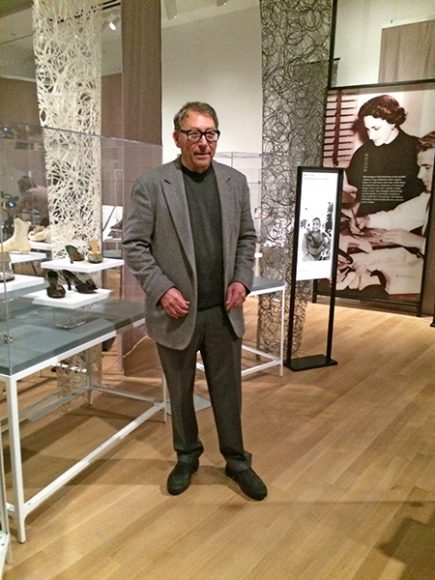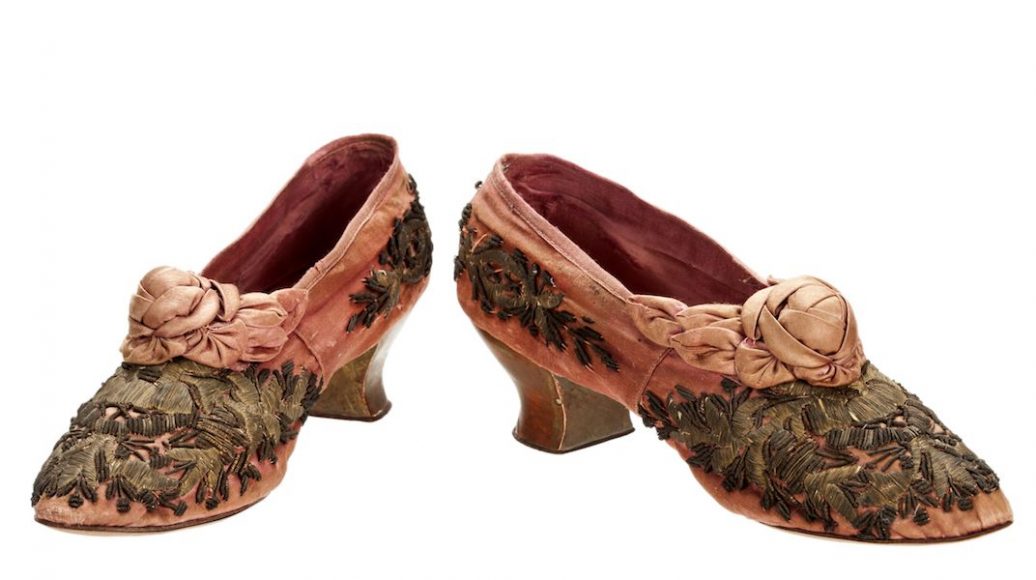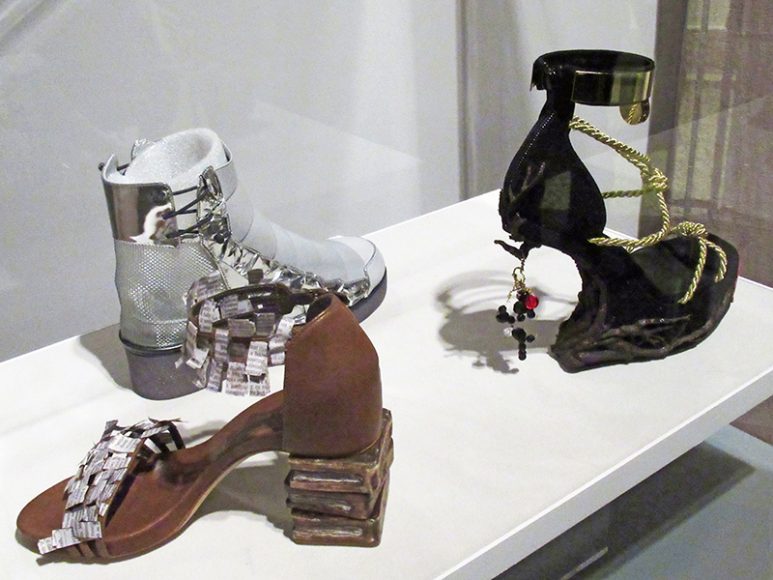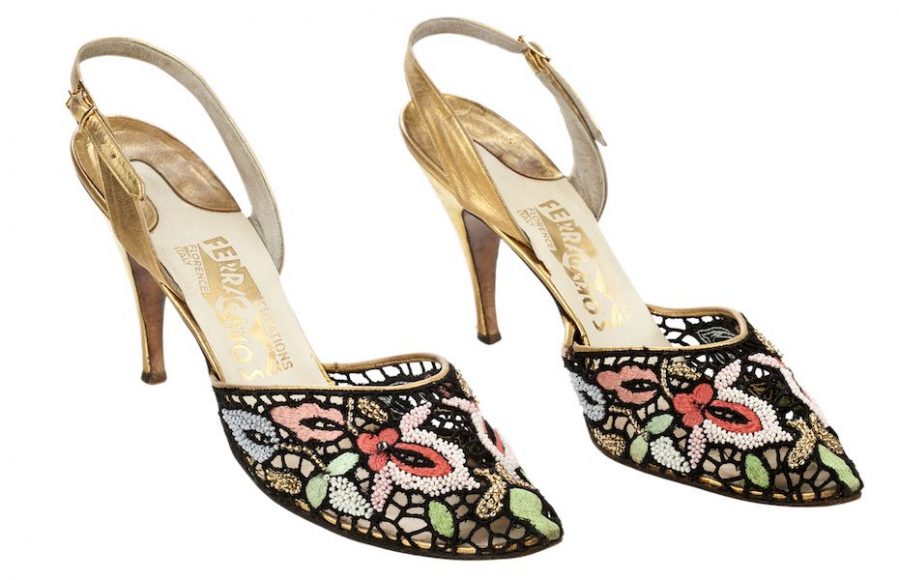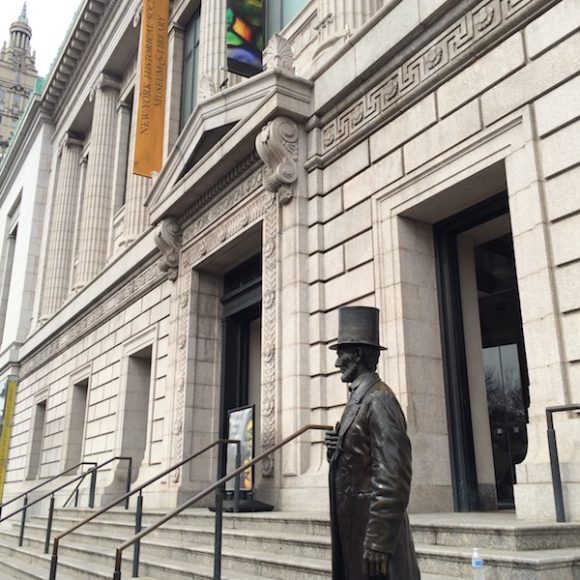When WAG first heard that “Walk This Way: Footwear from the Stuart Weitzman Collection of Historic Shoes” would be opening this month at the New-York Historical Society Museum & Library in Manhattan, a wave of excitement ran through our office.
After all, Weitzman isn’t just the iconic shoe designer whose work is known around the world. He’s also a longtime Greenwich resident who just happened to grace the cover of our October 2013 issue, having met with WAG editor-in-chief Georgette Gouveia for an interview.
We shared the news of the exhibition in our February issue with an advance culled from press materials – but we’ve now had the pleasure of touring the exhibition in advance of its April 20 opening and our guide was none other than Weitzman himself.
“Walk This Way” is coordinated by Valerie Paley, the society’s vice president, chief historian and director of the Center for Women’s History, with Edward Maeder, consulting curator, and Jeanne Gardner Gutierrez, curatorial scholar in women’s history.
As Weitzman said in his opening remarks, shoes do more than just cover your feet: “I have always believed from the beginning that shoes tell a story.”
After his introductory comments, Weitzman and Paley led an informal walk – which began, fittingly on a red carpet – through the exhibition.
First stop was the “Million Dollar Shoe,” an interpretation of the show-stopping diamond-filled Weitzman design first worn by actress Laura Harring (“Mulholland Drive”) at the Academy Awards ceremony in 2002.
Though she was also wearing the famed Habsburg diamond, as Weitzman said, “No one asked about the diamond. It was all about the shoe.”
From there, it was a thoughtful, colorful step – sorry, we couldn’t resist – through history. Weitzman shared not only personal anecdotes but also countless historical details, a testament to his devotion to his chosen field.
The exhibition is designed, as advance materials described, to explore, “how shoes have transcended their utilitarian purpose to become representations of culture – coveted as objects of desire, designed with artistic consideration and expressing complicated meanings of femininity, power and aspiration for women and men alike.”
The exhibition, which fills the Joyce B. Cowin Women’s History Gallery at the society’s Center for Women’s History, highlights 100 pairs of shoes from the designer’s extensive private collection, one assembled by Weitzman and his wife, Jane Gershon Weitzman, over some 30 years. (Weitzman was quick to remind that the collection represents gifts his wife presented to him, some even sparking design inspirations).
The exhibition also includes historic artifacts from the society, such as brass and bronze shoe buckles from a Revolutionary War officer’s shoes (1760-83) and a pair of leather children’s shoes (circa 1904).
Among the treasures from the Weitzman collection are a pair of pink silk embroidered boudoir shoes created for the 1867 Paris Universal Exposition that reflected Western consumers’ taste for “exotic” textiles in an era of European imperial expansion; dance hall shoes from the early 20th century; early department store shoes such as circa-1937 red velvet and gold T-strap pumps; and Salvatore Ferragamo’s handmade black needlepoint Tuscan lace heels (circa 1954-55) designed for Italian actress Sophia Loren.
But, as it was more than clear, it’s hard to pick a favorite.
Weitzman – who stepped down as creative director of his eponymous company this past spring and continues his transition toward the title of chairman emeritus in May – is far from idle.
He mentioned teaching, so we followed up with him after the tour only to learn he’s leading a course on entrepreneurship at the Wharton School at the University of Pennsylvania, which he also attended. (He also gives seminars at Harvard and Yale universities).
Though not a fashion course, he noted, it resonates with the students as he discusses “how I built a brand.”
He’s in Philadelphia – “an hour and 10 minutes from Penn Station” – five days a week, every other week.
Weitzman also shared his thoughts on the globalization of the fashion industry, how great design from around the world can now reach a wider audience.
He was also buoyed by the creativity displayed by the next generation.
In 2017, Weitzman and the historical society sponsored a design competition for high school students in the tristate area, with the winning designs in both categories fabricated by Stuart Weitzman. They include the two designs that tied for top honors in the Socially Conscious Fashion division (“Empowerment” by Samantha Efobi of Byram Hills High School and “Veni. Vidi. Vici.” by Alivia Matthews of the High School of Art and Design), while Danielle Fliegel of Byram Hills High School’s “Ziggy” took the prize for Material Innovation.
Earlier in the morning, Weitzman had spoken of how he decided to actually make the winning shoes, which fill a display case that concludes the exhibition.
“I have made these shoes for these students, and I know they will fall over dead when they see these shoes.”
Matthews, from the High School of Art and Design, arrived near the end of the tour and indeed seemed to appreciate the magnitude of her honor. It was heartwarming to see Weitzman so genuinely interested in her story, chatting about the design – and her career plans.
Taking a final look, we asked Weitzman if it was rewarding to see it all finally in place. We weren’t surprised by his affirmative answer, with him adding that there’s already been interest in turning it into a touring exhibition.
And for him, in Greenwich, that would be a good thing.
“I was running out of room in the house,” he said with a laugh.
(And of note, the gift shop is already stocked with exhibition-related goods including the comprehensive companion book of the same name by Edward Maeder with contributions from Weitzman and Paley and published by D Giles Limited).
“Walk This Way: Footwear from the Stuart Weitzman Collection of Historic Shoes” will open April 20 and continue through Oct. 8 at the New-York Historical Society Museum & Library in Manhattan.
For more, visit nyhistory.org.
— Mary Shustack

